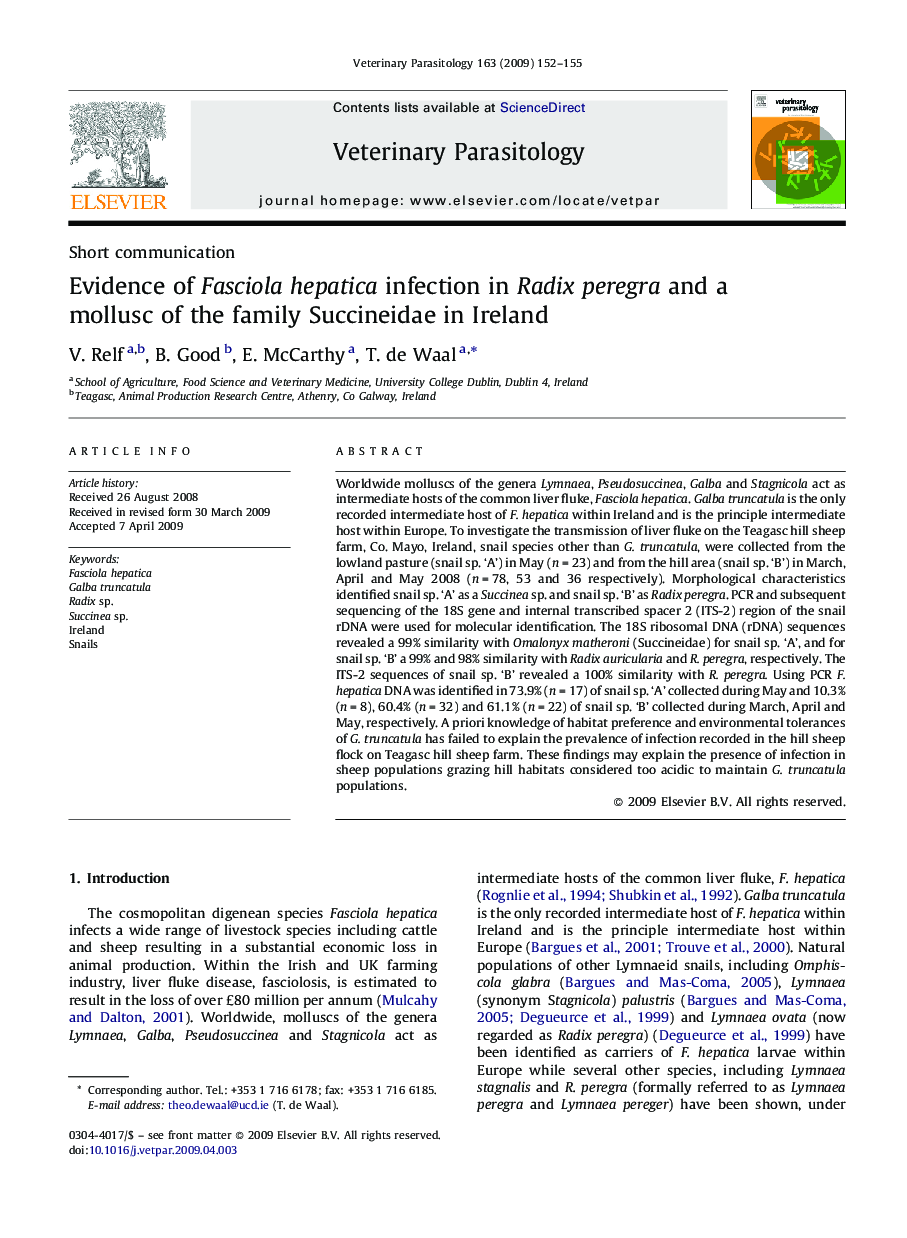| Article ID | Journal | Published Year | Pages | File Type |
|---|---|---|---|---|
| 5806224 | Veterinary Parasitology | 2009 | 4 Pages |
Worldwide molluscs of the genera Lymnaea, Pseudosuccinea, Galba and Stagnicola act as intermediate hosts of the common liver fluke, Fasciola hepatica. Galba truncatula is the only recorded intermediate host of F. hepatica within Ireland and is the principle intermediate host within Europe. To investigate the transmission of liver fluke on the Teagasc hill sheep farm, Co. Mayo, Ireland, snail species other than G. truncatula, were collected from the lowland pasture (snail sp. 'A') in May (n = 23) and from the hill area (snail sp. 'B') in March, April and May 2008 (n = 78, 53 and 36 respectively). Morphological characteristics identified snail sp. 'A' as a Succinea sp. and snail sp. 'B' as Radix peregra. PCR and subsequent sequencing of the 18S gene and internal transcribed spacer 2 (ITS-2) region of the snail rDNA were used for molecular identification. The 18S ribosomal DNA (rDNA) sequences revealed a 99% similarity with Omalonyx matheroni (Succineidae) for snail sp. 'A', and for snail sp. 'B' a 99% and 98% similarity with Radix auricularia and R. peregra, respectively. The ITS-2 sequences of snail sp. 'B' revealed a 100% similarity with R. peregra. Using PCR F. hepatica DNA was identified in 73.9% (n = 17) of snail sp. 'A' collected during May and 10.3% (n = 8), 60.4% (n = 32) and 61.1% (n = 22) of snail sp. 'B' collected during March, April and May, respectively. A priori knowledge of habitat preference and environmental tolerances of G. truncatula has failed to explain the prevalence of infection recorded in the hill sheep flock on Teagasc hill sheep farm. These findings may explain the presence of infection in sheep populations grazing hill habitats considered too acidic to maintain G. truncatula populations.
